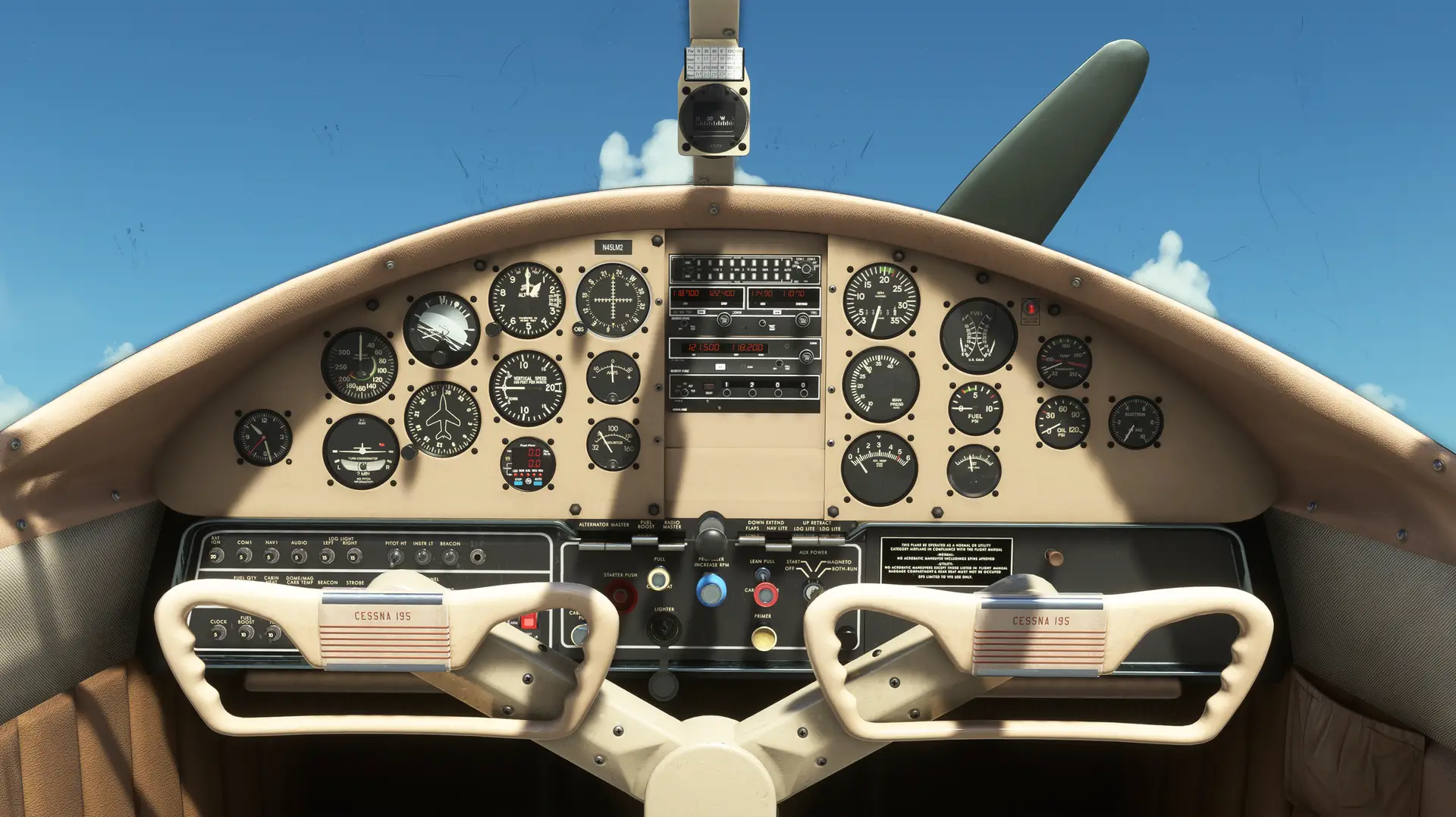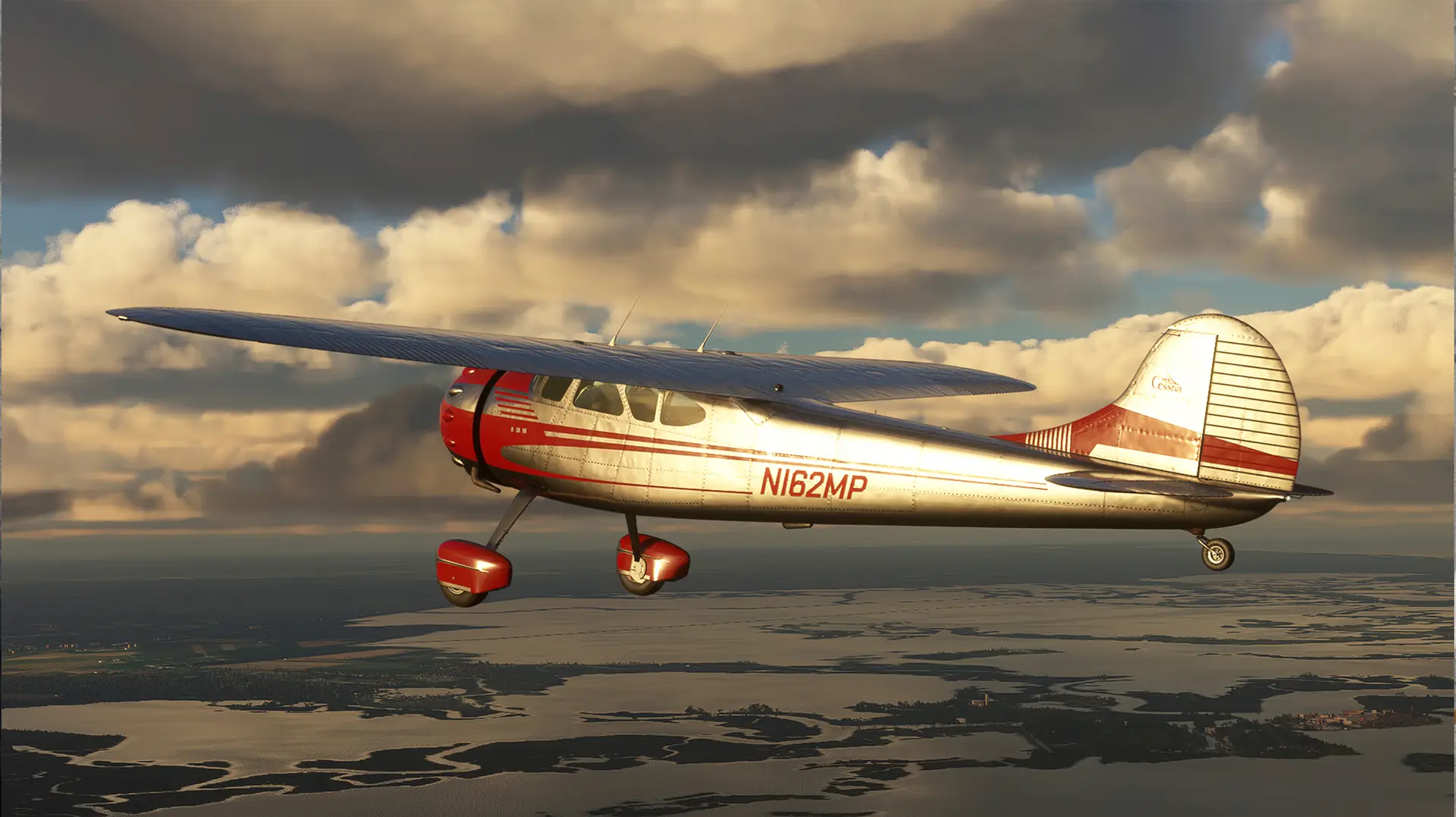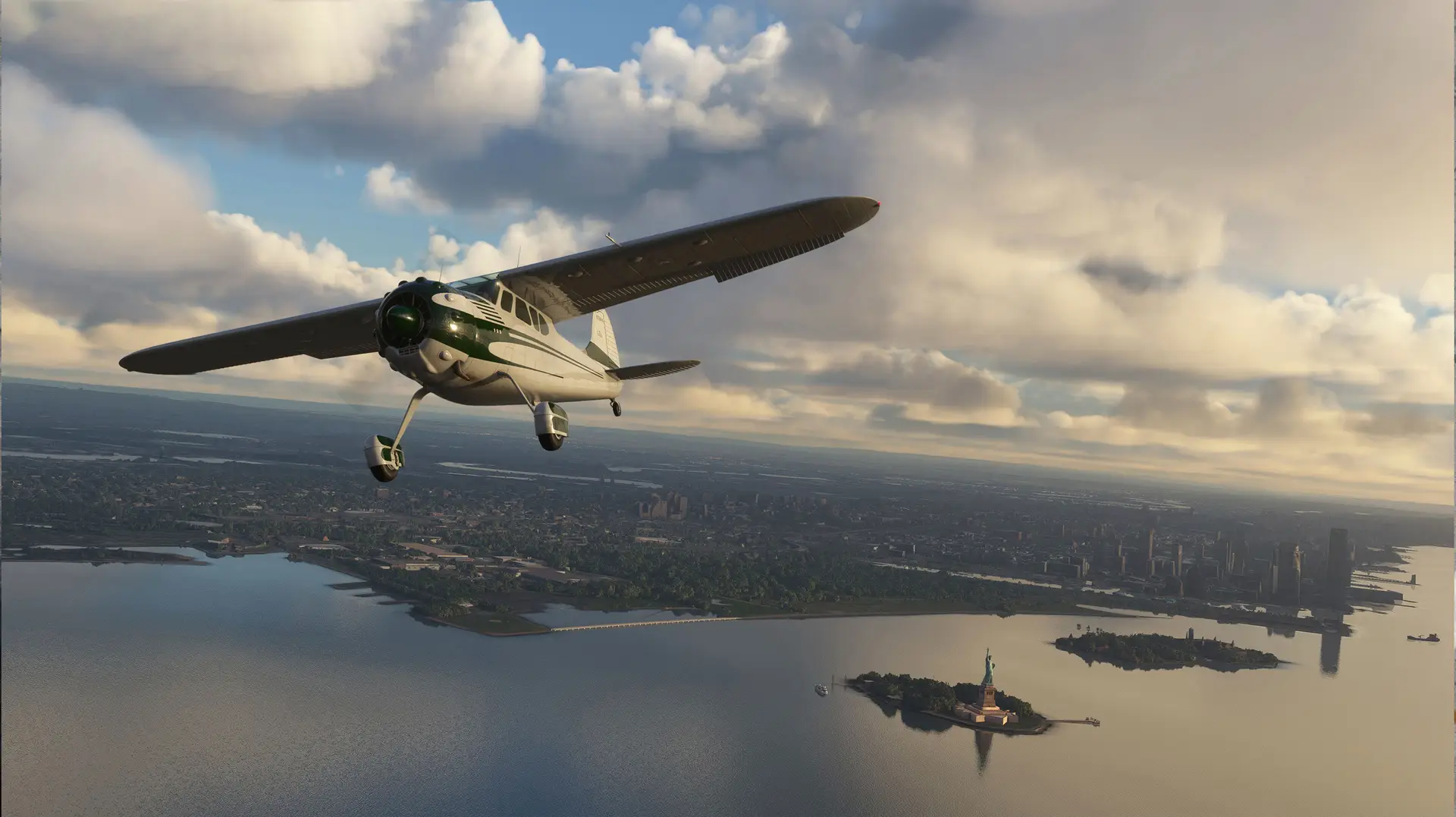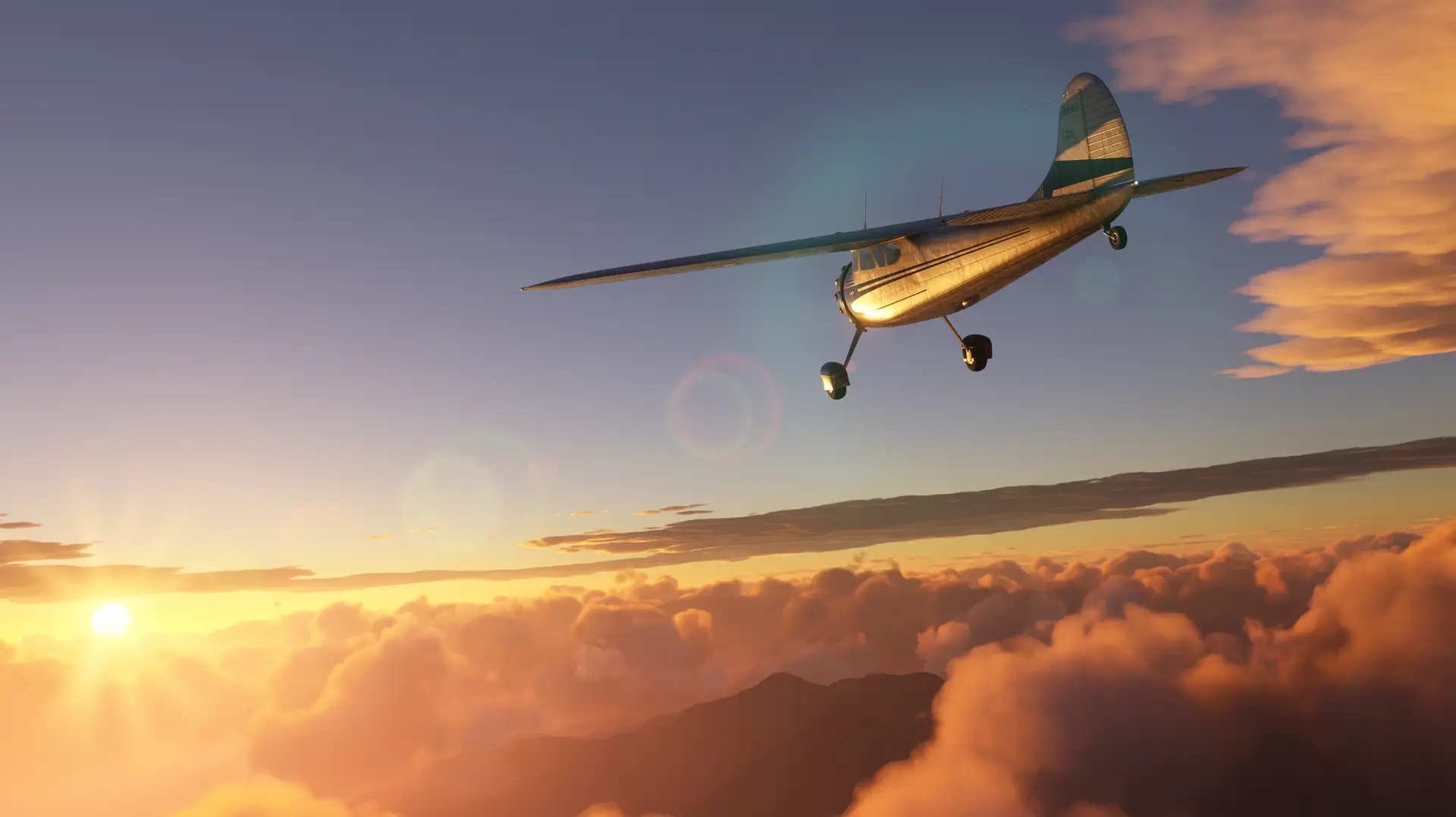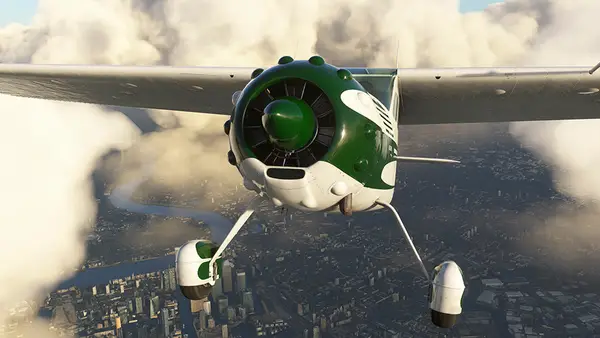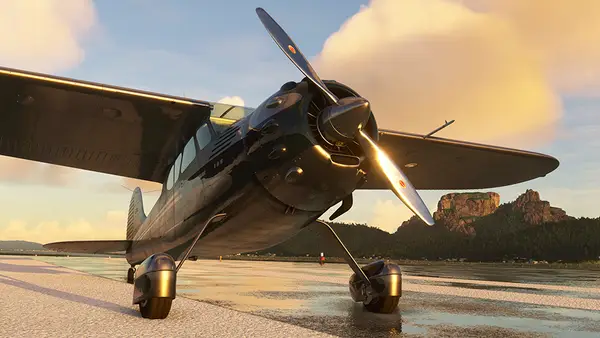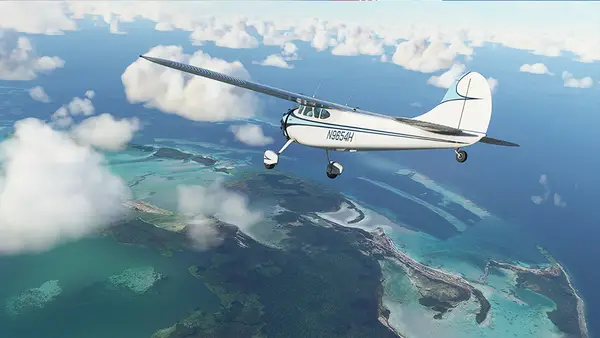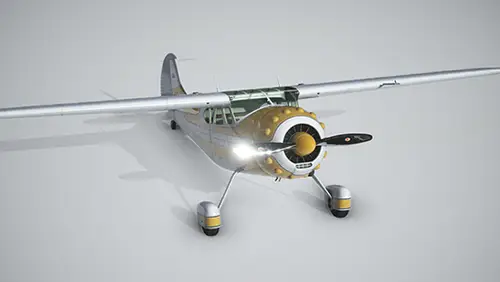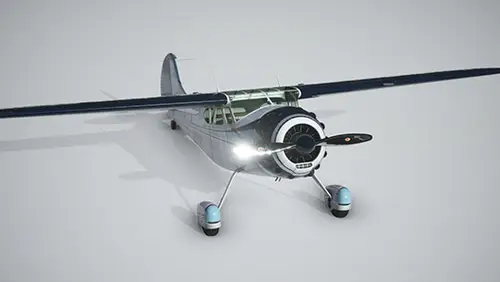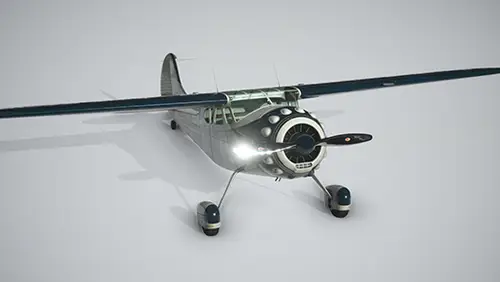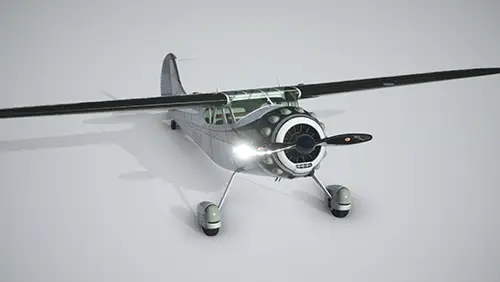The 195 Businessliner is a single-engine, high-wing general aviation and utility airplane by American aviation producer Cessna. The aircraft is one of a small family that comprises the 190 and the 195. The 195 was the last Cessna aircraft the company developed that was powered by a radial engine, and the first composed of all-aluminum construction. Aimed at the business market, the 195 has seating for five, including pilot. Many aviators love it, in great part, for its beautiful and classic looks, both its exterior and its cockpit.
Cessna developed the 195 from its mid-1930s offering, the Airmaster, a high-wing, cantilever monoplane with a traditional undercarriage. The 195 took its maiden flight in 1945 and was introduced in 1947. It quickly earned a reputation as reliable and efficient, and was adopted by the United States Army, which designated it the LC-126, and the Air Force, naming it the U-20. Cessna produced the Businessliner from 1947 to 1954. Many still fly today, and are sought after due to their rugged build, solid performance, and looks that evoke earlier decades of flight.
The 195 measures 27 feet, 4 inches in length, stands 7 feet, 2 inches high, and has a wingspan of 36 feet, 2 inches. It features a standard empennage and a fixed traditional undercarriage. The roomy cockpit is smartly arranged and sports polished wood controls. The aircraft is powered by a 7-cylinder, air-cooled Jacobs R-755B-2 radial piston engine that produces up to 275 horsepower and swings a Hamilton Standard 2-blade constant-speed propeller. The Cessna 195 has a range at cruising speeds of 633 miles, an endurance of four hours, a ceiling of 18,300 feet above sea level, and it climbs at 1,135 feet per minute. It cruises at 170 miles per hour and has a maximum cruise speed of 178 mph.
The Cessna 195 Businessliner looks both elegant and powerful with its large cowling that encloses its radial engine and smooth lines throughout its entire form. Flying it is an unforgettable experience, as its engine really delivers and it demands that pilots pay close attention to each control input, from take-off to landing.

